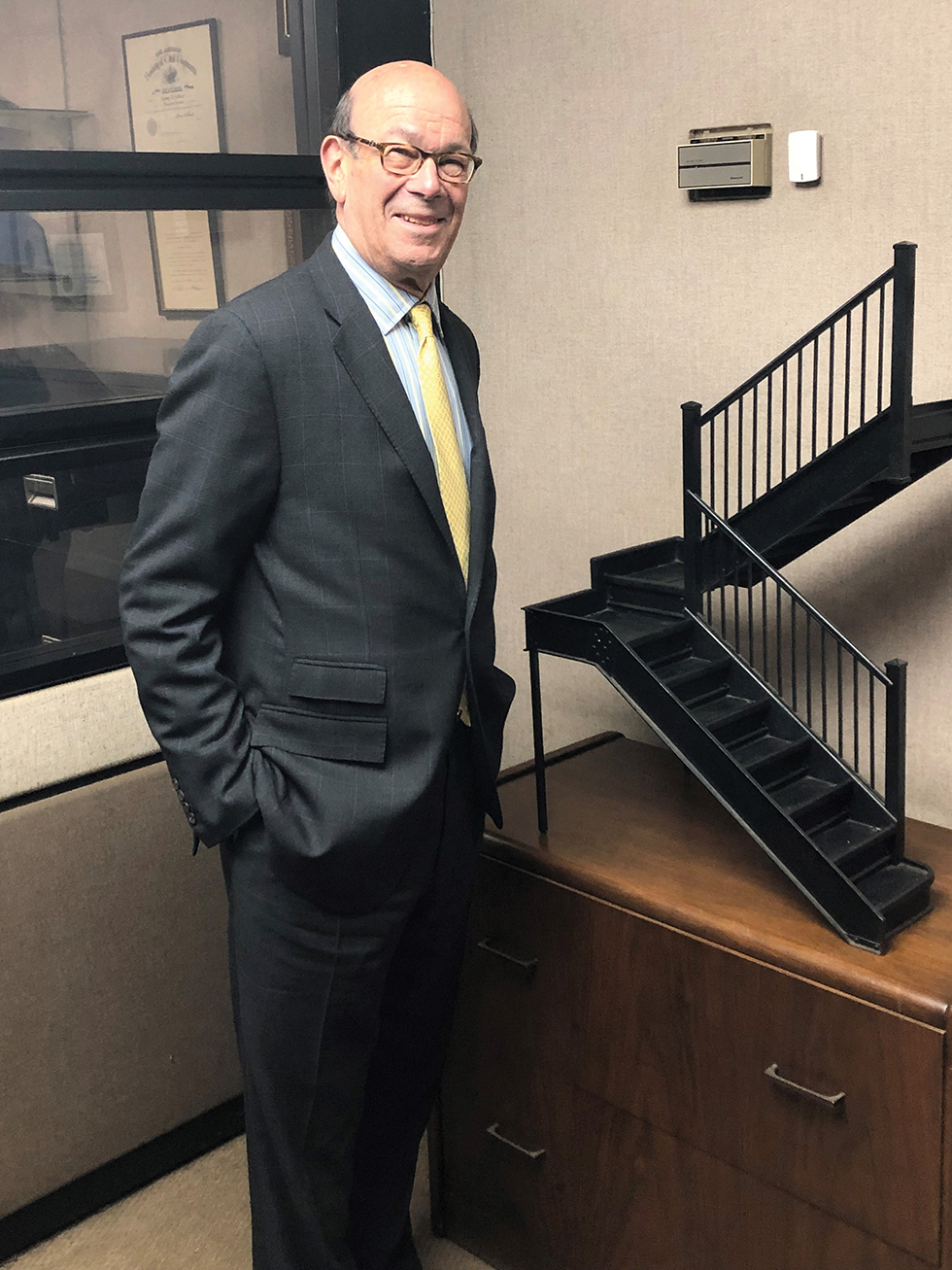It is a three-story view down from the top landing at Empire City Iron Works in Queens, N.Y. to the factory floor below. Each of the half flights to that top floor are different, purposefully built with the intention of serving as a model showcase. The first flights are replicas of the terrazzo steps created for Lufthansa in Terminal One at the JFK International Airport, but by the time you get to the top, the view below has been boosted by more standard staircases where form follows function.

Heffner owns Empire City with his brother, Edward, and son, Simon, who is destined to assume sole operational control as the fourth generation. The company based out of Long Island City is the oldest, and largest of its kind. This fabricator of miscellaneous metal products for the construction industry has been in business for 115 years, to be exact. Today, their work is focused on installing steel pan and ornamental stairs, structural steel, pipe railings, walkways and metal supports.
“My grandfather emigrated from Austria,” Heffner said, recounting the family history he knows so well. Leopold Heffner had apprenticed as an ironworker, coming to the U.S. in 1903 and settling in Brooklyn. A devout Jew, he realized early on that working for others meant he would be unable to observe the Sabbath, so it took very little time for him to decide to open his own business. Early lines of work included cast iron frames and covers for the coal-delivery holes that studded old New York’s sidewalks. During World War II, Empire City Iron Works provided supplies to the United States Navy, including ammunition boxes and watertight doors for ships that left from the Brooklyn Navy Yard.
Today, Heffner can point to almost any major building in the city with a defined sense of ECIW’s legacy as it pertains to the city’s architectural landscape. Indeed, speaking to him is a geography lesson on the NYC metropolitan area. As a testament to the company’s longevity, many of the high rises and office buildings Empire City has been involved with were not only in construction, but also renovations and even reconstructions: Pan Am Building (now MetLife), World Financial Center, World Trade Center (and the rebuilt One WTC, Towers 3 and 4), Metropolitan Opera House, Yankee Stadium, the arrivals area at JFK Airport, the U.S. Tennis Association’s Arthur Ashe and Louis Armstrong Stadiums, Time Warner Center, the renovated MoMA, Cornell Tech, and, most recently, some of the newest buildings in Hudson Yards. This project is the largest current construction project in America, and when finished, will be the most expensive real-estate development in U.S. history. Along with working on three different office buildings in the development, “we’re creating spectacular tubular floating stairs enclosed in stone and glass,” Heffner said, for one of those entities.
When contemplating the role of his education in his career success, he said, “Brown taught me to organize. If nothing else, you have to be able to organize both bids and people because you’re not going to be successful in construction or any other business without that. This is a skill you can use in any job, anywhere.” He describes his senior civil engineering project, the layout of the Providence city sewer system, and talks of his summer employment, including stints as a surveyor at Consolidated Edison, New York’s colossal energy company. “Being an engineering student at Brown, at least at that time, didn’t really allow you to participate in many other things,” he said. “But having spent that time at Con Ed, I ended up interviewing for a full-time job there right before graduation, and they hired me. I don’t know how I didn’t think my father and grandfather would find out about it, but they did. They called me in to talk, basically said that it wasn’t going to happen, and I’ve been here ever since,” he mused.
During his time as an undergrad, Heffner fondly remembers living at 101 Archibald House in the Keeney Quadrangle. “I went to see it a few years back, all the time bragging about how it was the largest single room in all of Brown’s dormitories. It’s not as big as I remembered,” he quipped. Heffner also spent a summer working on the new construction of what was once Union Carbide’s headquarters (now JP Morgan Chase’s headquarters on Park Avenue), and turned his time there into a University award-winning paper on the building. He was lauded with the Charles A. Maguire and Associates Prize for 1960-61 at his June 5 Commencement ceremony, along with a $50 check. “I never deposited that check,” he said. “My father would not let me cash it. It’s still in a vault.”
In 1984, Heffner created a Book Fund at Brown’s Science Library for the acquisition of engineering and applied sciences books. “Philanthropy has always been important to me. I like to find meaningful ways to give back,” he said. “All my books from Brown are still behind my desk at the office today. Some are quite antiquated, of course,” he said. “But my father imparted the importance of education in all of us,” Heffner said, referring to his two siblings. “And I like to think we learned well.”